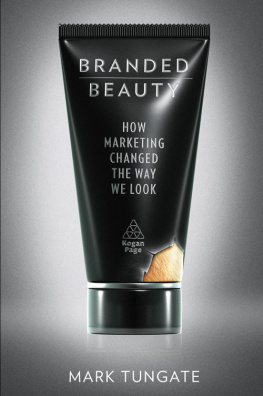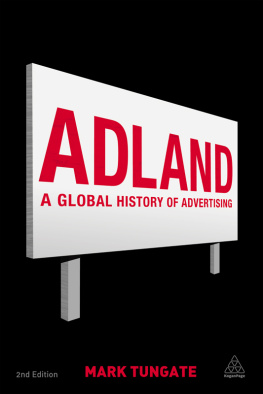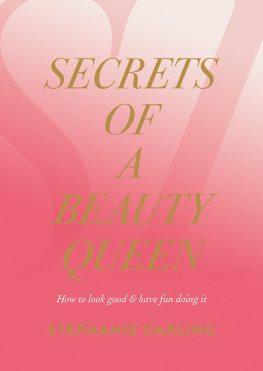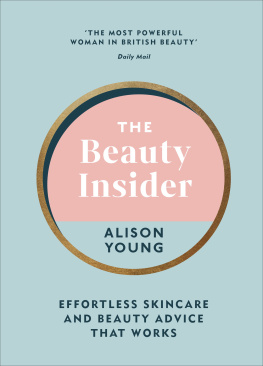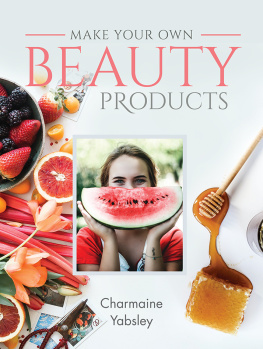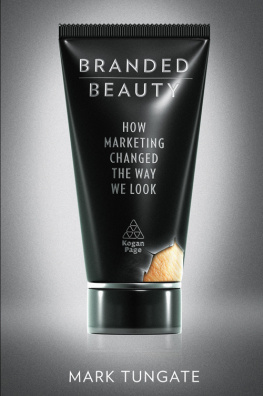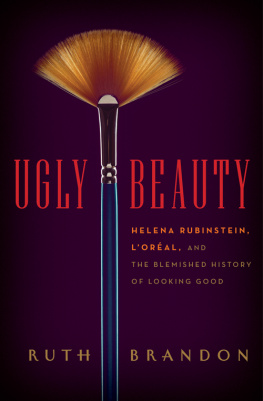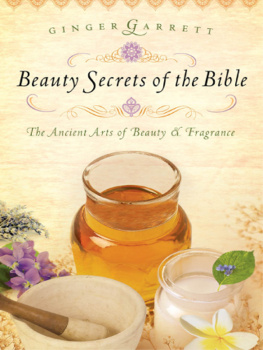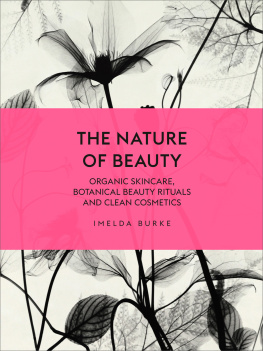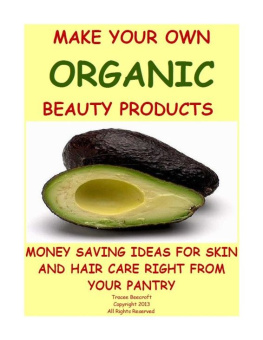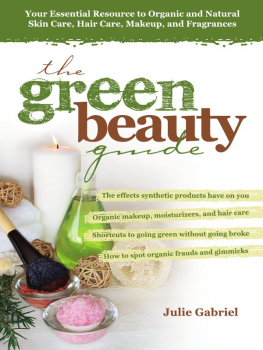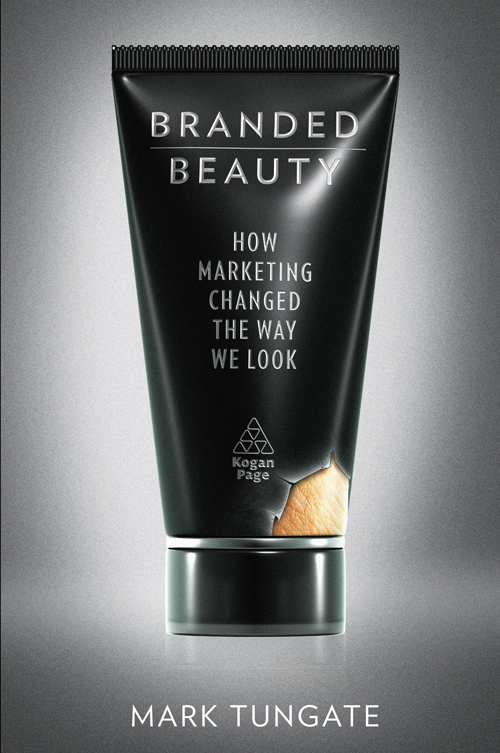Note on the Ebook Edition For an optimal reading experience, please view large
tables and figures in landscape mode. |
This ebook published in 2011 by
Kogan Page Limited
120 Pentonville Road
London N1 9JN
UK
www.koganpage.com
Mark Tungate, 2011
E-ISBN 9780749461829
For Graldine, Daphn, Carmen,
Carol and Tracie the most important
women in my life
Contents
T here are some beautiful people out there, and many of them helped me with this book. Most of them I cannot list, as they wished to remain anonymous but they know who they are. Those I can name are Simone Brochard of NY Adorned, Caroline Crabbe of Cosmetic Valley, Indi Davis of Aesop, Cassandra Moonen of Clarins, Camille Velut of IFF and Sabine de Seze of Cosmtique Magazine , as well as Franois Kermoal who put me in touch with her. A big thanks, too, to everyone quoted within these pages. I should not forget Jon Finch of Kogan Page, whose patience and enthusiasm in the face of my ever-sliding deadline seemed limitless. A very special thanks to Bruno Sells of Vasava in Barcelona, whose cover design has given this book a special radiance and uplift.
Finally, a special word of thanks to my wife, Graldine, who was never less than supportive despite the stress of a house move right in the middle of this enterprise. She is the most beautiful of all.
The tyranny of beauty.
T here are more people outside the art gallery than in. They flock on the narrow Parisian street, smoking and sipping red wine from plastic cups, the boys cartoonish with their creative facial hair and drainpipe jeans, the girls deceptively fragile, all thin wrists and dark roots. Many of them are wearing vintage leather jackets against the first chill of September. They surreptitiously check one another out, which only confirms what they already knew: the same people show up at all these things.
Inside, the B.A.N.K gallery is fuggy and loud. A silver-haired man in a dapper dark-blue blazer stands out like a kingfisher among starlings. He is Jean-Charles de Castelbajac, fashion designer and artist. This is the opening night of his exhibition, The Tyranny of Beauty.
Castelbajac revels in his own contradictions: a genuine aristocrat whose clothes are adored by rappers; the fianc of a former Miss France (Mareva Galanter, 1999) who has chosen to satirize the beauty industry. He has done so by selecting paintings from the 18th and 19th centuries and sending photographs of them to China, where artists have copied them. He has then defaced them with the symbols of branding. A portrait of a lovely young noblewoman is obscured by lettering proclaiming New Formula! Concentrated shower cream for dry skin. The Delacroix painting Liberty Leading the People is emblazoned with a Nike swoosh. Castelbajac also commissioned medieval-style tapestries of Snow White in a sly reference to the canons of beauty imposed by popular culture.
But the standout exhibit is a series of three busts of Marie Antoinette the original is in the ancestral home which Castelbajac sent to aesthetic surgeons in France, the United States and Russia. The French surgeon was the kindest, fixing the French queens double chin and giving her a subtle lift to enhance her cheekbones. The American intervention was more dramatic, plumping up her lips with collagen and straightening her nose. The Russian surgeon was the most radical, turning her lips into cushions and her cheekbones into razors: from pastry-loving Austrian duchess to catwalk queen.
With a twinkle in his eye, Castelbajac says that the show is not intended to be political merely thought-provoking. Who is to say that todays ideals of beauty are better than those of the past? he asks. In her day, Marie Antoinette was considered an icon of fashion. If she lived now, as you see, her features would have been altered to conform to an impossible ideal. Why do we give in to this relentless desire for self-improvement, this insatiable need to please?
JC, I couldnt have put it better myself.
I dont work in the beauty industry, although you could say I operate on the fringes of it, writing about fashion and advertising. And just lately Id had the feeling that the subject of beauty was becoming more aggressively present in the media. Several trends were pulling in different directions. On the one hand, I was reading more reports about Botox and similar procedures, in a language that was increasingly offhand, as if these interventions were becoming routine. On the other, rising alarm over chemical ingredients was creating a demand for natural and organic beauty products a new organic brand seemed to blossom every 10 minutes. Hovering above all this were the global beauty giants, hungrily fixing their gaze on China and other emerging markets as the West struggled to lift itself out of a slump.
What started as the germ of an idea quickly grew out of proportion. The more I dug into the cosmetic and personal care sector, the more intrigued I became. For a start there was the sheer size of the thing: estimates varied, but one figure that often surfaced, from Euromonitor International, suggested that the global industry was worth US$350 billion a year, of which the largest portion was generated by skincare products. Then there were the personalities behind the brands: dipping into the biographies of Max Factor and Helena Rubinstein made me yearn to find out more about their colourful, incident-packed lives.
It also struck me that there were alternative concepts of beauty to explore, which is how I ended up talking to tattoo artists in Brooklyn.
Above all, I was fixated on the question that had inspired Castelbajacs show: how did we get to this point? What drives us to spend so much money tampering with our looks?
A survey conducted among 8,600 women by the French website aufeminin.com in 2010 provided additional impetus. A quarter of respondents from across Europe admitted being addicted to beauty, rarely leaving their homes without applying some form of make-up. They considered mascara particularly indispensable.
Analysing this data, sociologist Jean-Franois Amadieu wrote:
While people claim that they take up diets, sport, cosmetic surgery, make-up or fashionable clothes for themselves, to feel good in their skin or in front of a mirror in reality, they are more than ever influenced by the norms of society, fashion and advertising The efforts that they go to with their make-up and clothing are evidently linked with being outside, that is to say, in front of others. The fact that they wish to feel free and autonomous and do not want to admit their conformism does not change the fact that the norms of physical appearance are globalized, known to all, and restrictive.
(La beaut aujourdhui, cest quoi?,
www.influencia.net, 8 September 2010)
But while there are trends in beauty, some of our ideas about it have not changed a great deal over the centuries. John Armstrong, in his (2005) book The Secret Power of Beauty , notes that there is a remarkable consistency across history when it comes to what are regarded as the most attractive human forms. Greek statues still embody ideals of male beauty; the women in Titians paintings still look lovely today.
It is often proposed that beauty is linked to proportion: the love of outline, of balance, of symmetry, of gentle curves. This theory takes us back to the 6th century BC, and Pythagoras, who discovered that two different lengths of string, if one was exactly half the length of the other, emitted harmonious musical notes when plucked. This exercise could be repeated ad infinitum, as long as the lengths of the strings remained proportional. Pythagoras expanded on this theory to suggest that harmony in all things was governed by symmetry. Writes Armstrong: The Pythagorean term for beauty was cosmos a meaning still resonant in the aims of cosmetic surgery and the application of lipstick.

